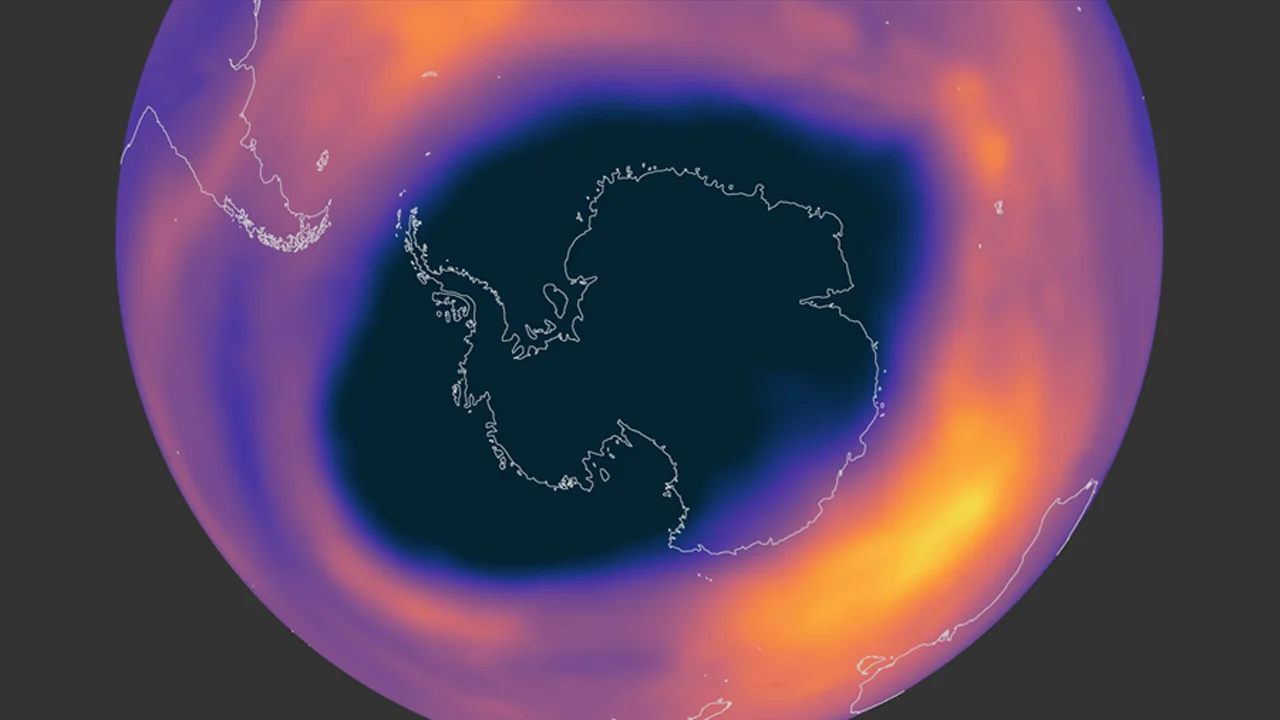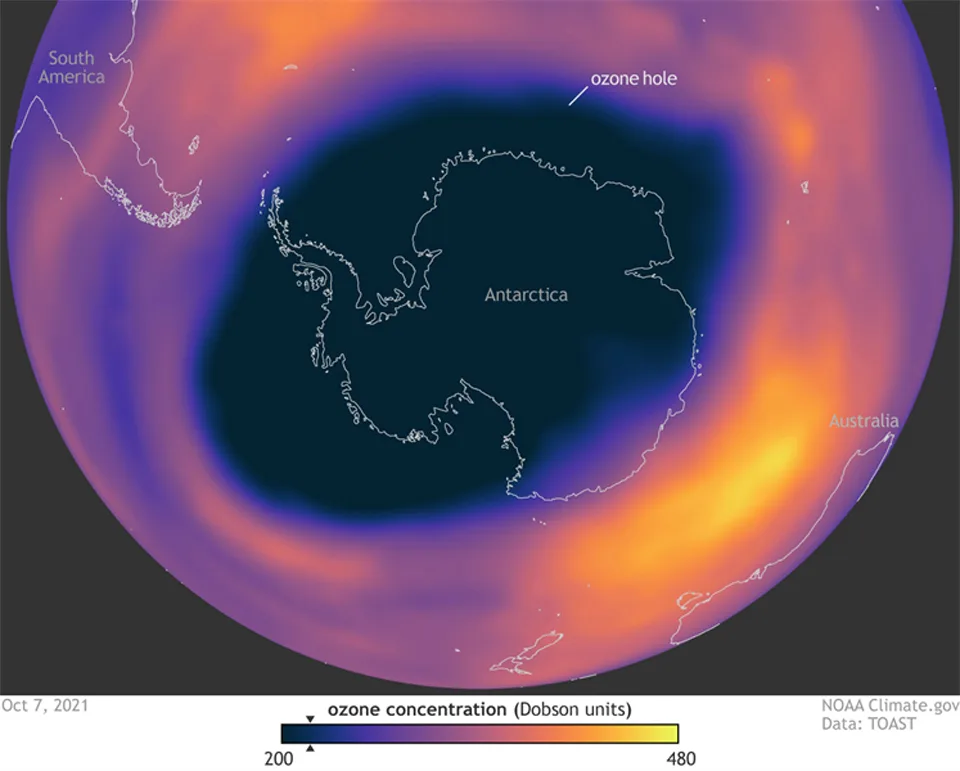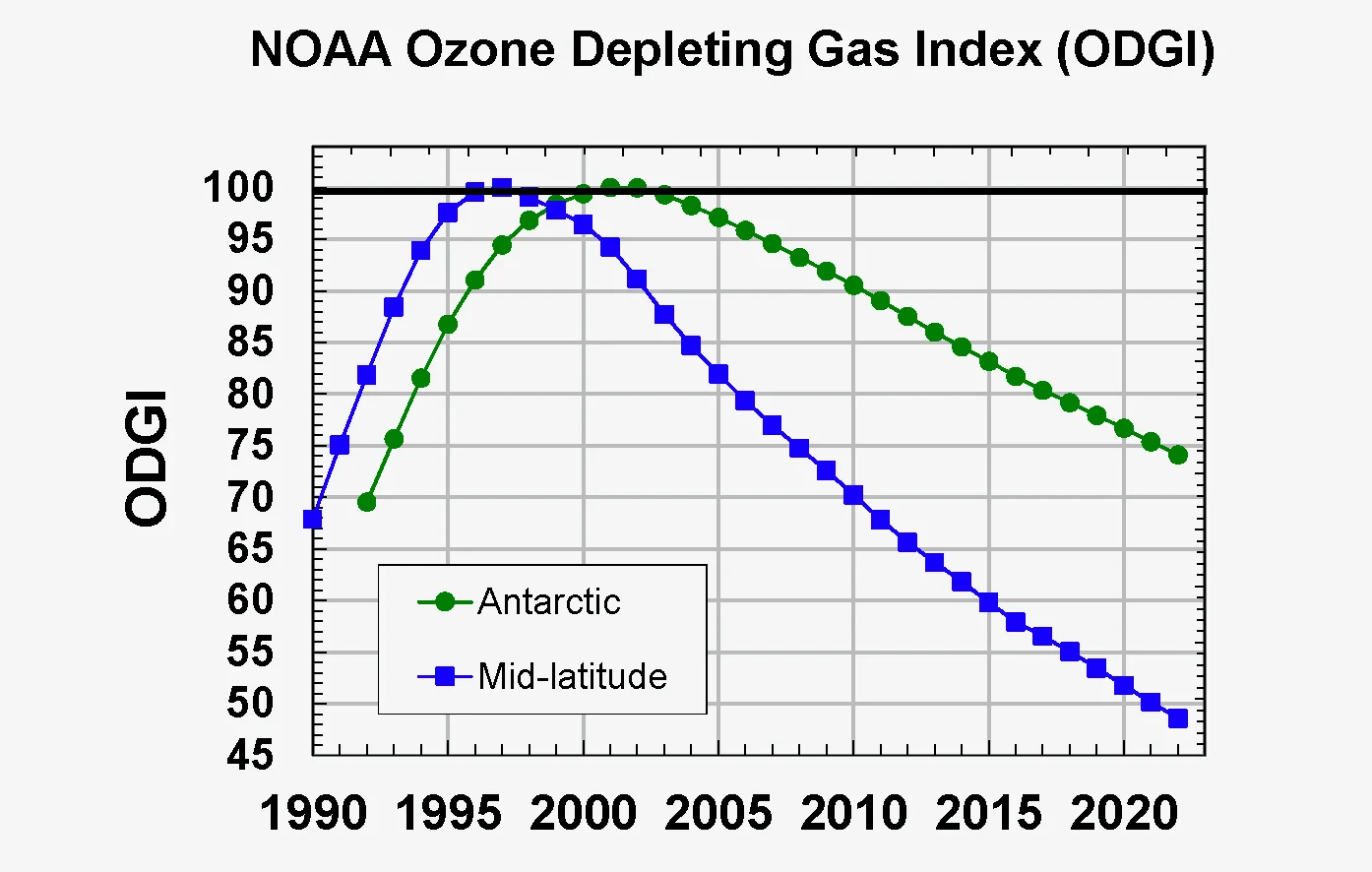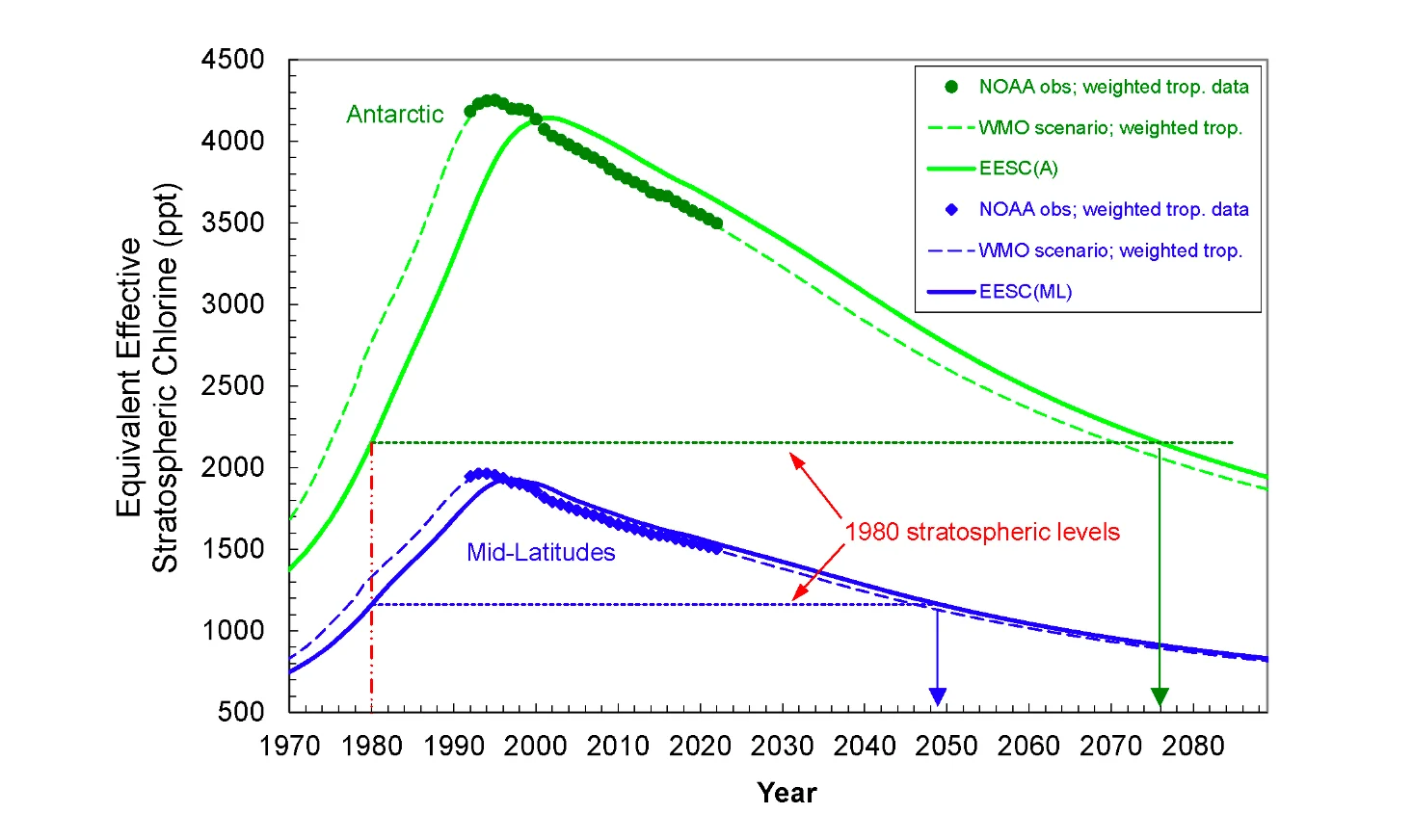
Ozone layer crossed a significant milestone towards recovery in 2022
We're now halfway to reducing ozone depleting chemicals to their 1980 levels.
As of this year, the levels of ozone-depleting chemicals in the stratosphere reached a major milestone on the path to recovery, dropping by more than half of what's needed for the ozone layer to fully recover.
Back in the 1980s, it was discovered that chemical gases used in air conditioning, refrigeration, and aerosol cans — collectively known as chlorofluorocarbons (CFCs) or ozone-depleting substances (ODSs) — were damaging the stratospheric ozone layer. This protective layer, located high up in the atmosphere, essentially acts as a natural shield against harmful ultraviolet radiation from the Sun. The depletion of ozone by CFCs was resulting in a large ozone hole over Antarctica, which was detected by satellites each year. It was also causing a thinning of the ozone layer over the mid-latitudes.

The Antarctic ozone hole is shown here, as it was measured on October 7, 2021. Also visible on the map are thin regions of the ozone layer farther north, in the mid-latitudes. (NOAA Climate.gov)
When the Montreal Protocol came into effect in 1989, it banned the production and use of ozone-depleting substances. The goal was to reduce the concentration of these chemicals back to the levels they were at in 1980. Since then, there have been noticeable improvements. For example, concentrations of these gases have been falling fairly steadily since the early 1990s. Also, the size and duration of the Antarctic ozone hole have mostly stabilized, and there are signs that it is slowly recovering.
According to NOAA, as of early 2022, we have now reached a significant milestone towards the goal of the Montreal Protocol.
The concentration of ozone-depleting chemicals in the mid-latitude stratosphere has now dropped by more than half of what is necessary to reach 1980 levels.
"It's great to see this progress," Stephen Montzka, the senior scientist for NOAA's Global Monitoring Laboratory, said in a press release. "At the same time, it's a bit humbling to realize that science is still a long way from being able to claim that the issue of ozone depletion is behind us."

This graph of the Ozone Depleting Gas Index (ODGI) ranks CFC concentrations in the mid-latitudes (blue line) and over Antarctica (green line) as a percentage of the difference between their peak values (in the 1990s and 2000s) and their 1980 concentrations. In 2022, mid-latitude CFCs have fallen to an ODGI of around 47, while Antarctic CFCs are still around an ODGI of 74. (NOAA)
The same research found that the concentration of ozone-depleting chemicals over Antarctica has only fallen by 26 per cent over the same period.
NOAA says that there are multiple reasons for this, but mainly it is because the rate at which these chemicals break down depends on the "age" of the stratospheric air; Or, to put it another way, how much exchange of air there is between the troposphere and the stratosphere over time.
According to the latest report of The NOAA Ozone Depleting Gas Index: Guiding Recovery of the Ozone Layer, the average age of stratospheric air over the mid-latitudes is roughly three years, while over the Antarctic, it tends to be around 5.5 years. Thus, mid-latitude concentrations of ODSs are falling faster than over the Antarctic.

Tracking the concentration of ozone-depleting substances over time has allowed scientists to predict when they will reach levels that will allow the ozone layer to recover. (NOAA)
Based on the latest findings, NOAA scientists estimate that mid-latitude concentrations of ODSs will reach 1980 levels sometime around 2049. In the Antarctic stratosphere, levels should drop to that point by 2076.

